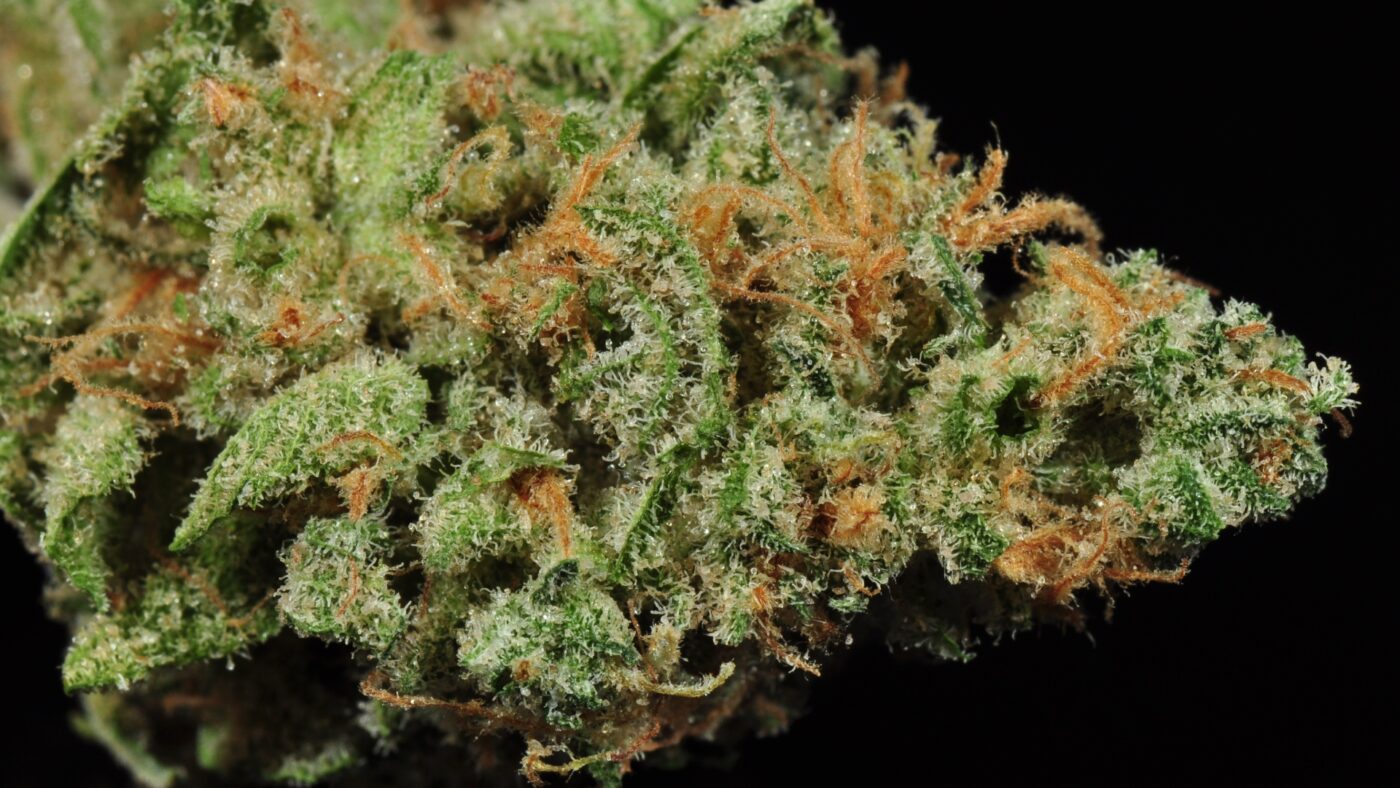GROWING
Blue Dream Strain: History and Information
The background scoop on one of the most renown cannabis strains of all time.

Few other strains have left an indelible mark on cannabis culture like Blue Dream. Usually a budtender’s go-to strain for new cannabis initiates, Blue Dream holds its own as one of the top selling strains in all the U.S. recreational cannabis markets to date. And it’s not hard to see why.
With an enticing, inviting fresh berry flavor and a lively, smooth functional high, this is one strain that seems to work well for a wide range of cannabis consumers. Even with all this popularity, Blue Dream’s origins are unknown and its true creator still remains a mystery.
The history of Blue Dream is quite interesting and sounds more like the story of a rockstar than a cannabis cultivar. This strain rapidly rose to fame, and stayed around long enough to be considered blase by cannabis elitists. It’s also one of the most imitated strains in cannabis history, to the point that currently in the recreational cannabis market so many different genetic variations of Blue Dream exist that almost no two dispensaries grow the same cut. More on that later, first let’s dive into what is known about Blue Dream’s origins.
Origins of Blue Dream
The first known appearance of Blue Dream was the medical cannabis collectives in Santa Cruz, California, around 2003. No substantiated claims as to who the breeder of Blue Dream have since come forth, it’s almost like the strain just appears out of the mist of the ocean coast. It’s been agreed upon that the parents are most likely DJ Short Blueberry crossed to Green House Seeds’ Super Silver Haze.

The genetics of Blue Dream are unknown, but are assumed to be DJ Short Blueberry and Super Silver Haze.
But again, since the actual breeder remains elusive, this is the agreed upon best guess. Blueberry has been around since the late 70s and Green House Seeds started winning awards with Super Silver Haze in the late 90s, so this tracks. However, there are many different versions of Blueberry and many different “Haze” strains as well, and it’s possible this is why so many different strains called “Blue Dream” exist today.
Blue Dream Traits
You know Blue Dream when you smell it. The most defining trait is its aroma and flavor. Akin to fresh fruit but even sweeter. Such a sweet thickness, you can almost taste the smell. Imagine yourself in a tropical paradise next to a waterfall holding a bowl of ripe, juicy, wet blueberries. All of a sudden the bowl of berries vaporizes into a cloud and you are standing in the middle of it. This is what Blue Dream smells like, blissfully fresh with a fruity funk.
Blue Dream produces photo worthy buds and colas that are so beautiful they are hard to break apart. They are plump but not rock solid dense, making for a smoother overall flower when enjoyed rolled up or out of a pipe. There is a decent amount of trichome coverage over the forest greens and amber stigmas that grow off the pistils.

Blue Dream has a gorgeous, forest-green color with heavy trichome coverage and long amber stigmas.
The flavor is right on par with the smell, it tastes like you are inhaling blueberry muffins fresh out of the oven, with a heavy emphasis on that morning fresh vibe. As the taste of berries subsides a lightly sweet and lofty aftertaste lingers, kinda like a berry seltzer water.
Once your senses get past the Blue, the Dream starts to kick in. By taking an almost pure indica, and crossing it with a heavy “haze” sativa strain, a perfect hybrid of effects has emerged.
You get the quick upward momentum of a sativa with a bright and euphoric feeling on the onset, with a touch of body mellowing warmness from the indica lineage. It is most often described as “floaty” and that is just about the perfect description.
This balanced high makes Blue Dream such a great introduction strain. It gives a slight sativa effect without any associated paranoia, and a slight indica effect without the couchlock. The average potency range for Blue Dream is around 20% – 22% THC, but can sometimes get as high as 26% THC. It’s a fairly potent strain, but has a fun and still functional high.
Blue Dream in the Garden
Cannabis home growers and producers love Blue Dream due to its ease of growth and heavy yield. Though many variations of the plant exist, most cuts of Blue Dream pack on vigorous growth both in flowering and vegetave states. Some cuts of Blue Dream seem very resistant to powdery mildew, but Boytrits or “bud rot” is a common problem for the strain due to its larger cola size and lack of air flow. It’s recommended to top the plant multiple times before flower to avoid one large main cola, as it will be more susceptible to bud rot.

Blue Dream is a common choice for cultivators because of its great yield and average flower time. photo credit
As an almost 50/50 sativa/indica hybrid, the length of the flowering time is relatively shorter than most sativa strains. At 8 to 9 weeks of flower, Blue Dream is ready to harvest. Compare this to your average sativa strain which could take 11 weeks or longer, plus the fact that Blue Dream has a more upbeat “sativa” high and large yield, it makes sense that growers would cultivate it.
The true Blue Dream is a clone-only variety, meaning no seeds exist and the only way to get a cutting is to know someone who knows someone. Some seed companies have taken it into their own hands to reproduce seeds or create a selfed-fertilized version, but this has led to the dilution of the Blue Dream name.
As the strain got more popular outside of California in places like Colorado and Washington, demand skyrocketed at the dispensaries. To meet this demand, it seems like even more knock-off Blue Dream strains were circulated. It is to the point now that in Colorado almost no two dispensaries have the same cut of Blue Dream.
In a recent study by Anne Schwabe, a cannabis researcher from Colorado, it was shown using microsatellite genetic testing of Blue Dream samples taken from multiple dispensaries across three states were all more or less genetically different from one another. This means, unfortunately, that no consistency between Blue Dream products you get at the dispensaries exist. While this is true about many cannabis strains today, a byproduct of cannabis being unregulated for so long, it seems a very obvious issue with Blue Dream. Buying the strain at different dispensaries could result in unexpected experiences.
In Conclusion
 Blue Dream still is a very popular, in-demand, strain for being established in 2003. photo credit
Blue Dream still is a very popular, in-demand, strain for being established in 2003. photo credit
With the proliferation of Blue Dream and its imitators, some cannabis consumers now consider the strain just another common, run-of-the-mill, mid-grade product. Once all the dispensaries started carrying their Blue Dream, it was seen as a kind of mainstream starter weed. Despite all this, it was still one of the most searched for strains in 2019, and still continues to outsell other strains in the market.
So love it or leave it, Blue Dream has stuck around through some pretty dramatic shifts in cannabis culture and changes in popular strain preference. Blue Dream will be there when you need that meditative hiking buddy, or quick boost to help enjoy a concert. Relax and unwind and let slip into a little Blue Dream.
Frequently Asked Questions
Where Did the Strain Blue Dream Come From?
Legend has it that Blue Dream originated in the Santa Cruz medical marijuana scene around 2003. No one has actually claimed to have bred it.
What Are the Original Blue Dream Strain’s Genetics?
The most commonly cited parents of Blue Dream are DJ Short Blueberry and Super Silver Haze. Many variations of the strain exist as well, using other Blueberry and Haze strains as the parents.
Who Made Blue Dream?
No one has ever claimed to have bred the strain, it just kind of appeared on the scene around 2003. This is possibly due to the fact that so many variations and imitations of the strain exist today, making it hard to retrace.
Why is Blue Dream Such a Popular Strain?
It has a bright, sunny sativa high with a soft and lofty comedown, making it a great strain for daytime consumption. Plus, it’s fairly easy to grow and has a huge yield, making it a garden favorite for cannabis producers.
